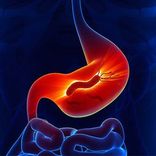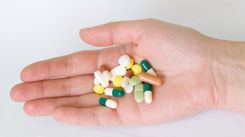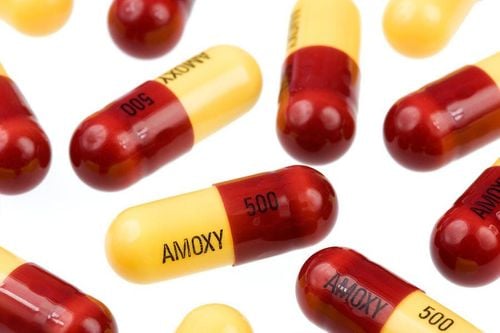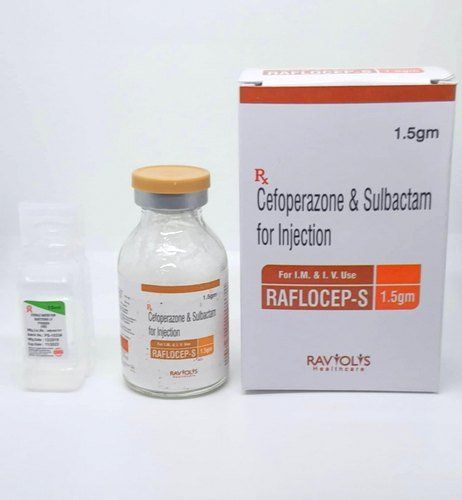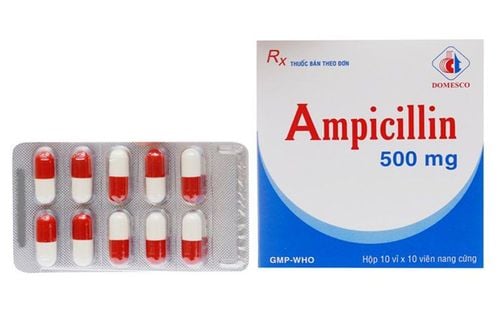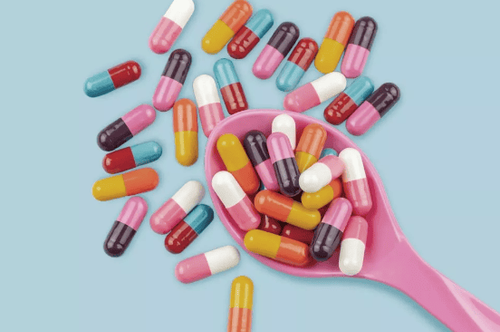Antibiotics are a group of medications used to treat diseases caused by bacteria, either by directly killing or slowing their growth, thereby supporting the immune system in resolving the condition. In some severe acute bacterial infections, strong, high-dose antibiotics are often used to save patients' lives; however, certain risks are associated with their use that need attention.
1. What are high-dose antibiotics?
High-dose antibiotics are a treatment method involving the use of antibiotics in sufficiently large doses to treat severe bacterial infections, helping to reduce inflammation in patients. Antibiotics can be classified in various ways, but a common method is to categorize them into broad-spectrum and narrow-spectrum antibiotics. Broad-spectrum antibiotics are effective against many different types of disease-causing bacteria, whereas narrow-spectrum antibiotics are effective only against specific bacterial strains.
Some cases requiring strong antibiotic treatment include:
- Community-acquired pneumonia: Patients with comorbidities such as heart failure, respiratory failure, kidney failure, liver failure, diabetes, alcohol dependence, or immunodeficiency may be treated with Fluoroquinolone (moxifloxacin 400 mg/day) combined with a beta-lactam (high-dose amoxicillin, 1 g three times daily).
- Lung abscess or pleural empyema: Initial treatment often requires high-dose antibiotics combined with two antibiotics administered intravenously or intramuscularly.
- Infective endocarditis: Early antibiotic treatment aims to eradicate bacteria in vegetations. High-dose, bactericidal antibiotics, typically combined with two intravenous antibiotics, are administered for 4–6 weeks.
- Osteomyelitis: Treatment involves high-dose intravenous antibiotics combined with prolonged antibiotic therapy lasting at least six weeks.

2. Risks associated with strong antibiotic use
Currently, the most common side effects of high-dose antibiotics are nausea and diarrhea. However, high-dose antibiotics still carry additional risks, such as:
- Fungal infections: Strong antibiotic doses can alter the bacterial environment in the body, leading to fungal infections in areas like the mouth, skin, or under the nails.
- Allergic reaction: Patients using high-dose antibiotics may experience allergic reactions such as rashes, eyelid itching, swollen lips, or even anaphylactic shock.
- Tooth discoloration: Tetracycline antibiotics often cause tooth discoloration in children under eight years old. Pregnant women using this antibiotic may have children with future dental enamel issues.
- Sun sensitivity: Antibiotics such as tetracyclines, fluoroquinolones, and sulfones can increase the skin's sensitivity to sunlight, leading to redness or sunburn.
- Cardiovascular problems: Although rare, side effects of high-dose antibiotics can include cardiovascular problems such as arrhythmias or low blood pressure.
Customers can visit Vinmec pharmacies within the system for safe medication consultations.
To arrange an appointment, please call HOTLINE or make your reservation directly HERE. You may also download the MyVinmec app to schedule appointments faster and manage your reservations more conveniently.

